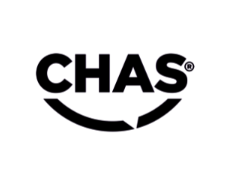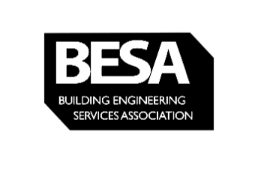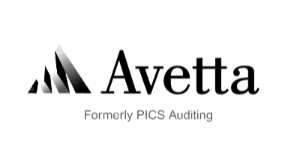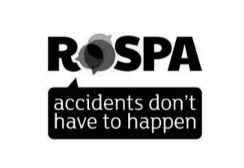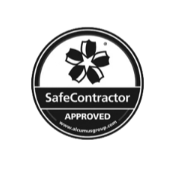phs Group has acquired Citron Hygiene UK - we’re here to support you. Read our customer FAQs and find our contact details here.
Healthcare-Associated Infections (HAIs) are infections that patients acquire while receiving treatment for medical or surgical conditions. These infections can occur in any healthcare setting, including hospitals, long-term care facilities, outpatient surgery centres, pharmacies, dialysis centres, and other facilities.
HAIs represent a significant concern for public health and patient safety, leading to increased morbidity, mortality, and healthcare costs. Preventing HAIs is crucial, and it involves multiple strategies that encompass policy implementation, staff training, patient education, and the adoption of advanced technologies. A professional healthcare hygiene provider such as phs can help you to put together such strategies.
In this post we will cover the basics of what you should know about HAIs, but first, more on what they include:
Understanding HAIs
HAIs are caused by a variety of pathogens, including bacteria, viruses, fungi, and parasites. The most common types of HAIs include:
-
Catheter-Associated Urinary Tract Infections (CAUTIs)
-
Central Line-Associated Bloodstream Infections (CLABSIs)
-
Surgical Site Infections (SSIs)
-
Ventilator-Associated Pneumonia (VAP)
-
Clostridioides difficile (C. difficile) infections
These infections often result from invasive procedures, antibiotic overuse, insufficient infection control practices, and transmission within healthcare settings.
The Impact of HAIs
The impact of healthcare associated infections is profound and includes:
-
Patient Outcomes: HAIs can lead to prolonged hospital stays, increased suffering, long-term disability, and even death.
-
Healthcare Costs: Treating HAIs is costly, often requiring extended hospital stays, additional diagnostics, and treatments.
-
Public Health: HAIs contribute to the spread of antibiotic-resistant bacteria, posing a significant challenge to public health efforts.
Strategies for Preventing HAIs
Effective prevention of such infections requires a multifaceted approach that involves stringent infection control practices, proper use of medical devices, hand hygiene, waste management, and antibiotic stewardship.
Hand Hygiene
Hand hygiene is the single most important measure to prevent the spread of infections. Healthcare workers must adhere to proper hand hygiene practices, which include:
-
Washing Hands: Using soap and water when hands are visibly soiled.
-
Alcohol-Based Hand Rubs (ABHRs): Using ABHRs that contain at least 60% alcohol for routine decontamination of hands.
The World Health Organisation (WHO) and the Centers for Disease Control and Prevention (CDC) have established guidelines that highlight the "Five Moments for Hand Hygiene":
-
Before touching a patient.
-
Before clean/aseptic procedures.
-
After body fluid exposure/risk.
-
After touching a patient.
-
After touching patient surroundings.
phs is able to handle this for you with our wide range of hand care related products and services.
Use of Personal Protective Equipment (PPE)
PPE, such as gloves, gowns, masks, and eye protection, is crucial in preventing the transmission of infectious agents. Proper use of PPE includes:
-
Donning and Doffing Procedures: Ensuring PPE is put on and removed correctly to avoid contamination.
-
Appropriate Selection: Using the right type of PPE based on the level of exposure and type of patient interaction.
Environmental Cleaning and Disinfection
Routine and thorough cleaning and disinfection of the healthcare environment are critical to reduce risk of infection. Key practices include:
-
High-Touch Surfaces: Regular cleaning of high-touch surfaces such as bed rails, doorknobs, and medical equipment.
-
Proper Disinfectants: Using EPA-registered disinfectants that are effective against the most common pathogens.
Sterilisation and Reprocessing of Medical Equipment
Proper sterilisation and reprocessing of reusable medical equipment are essential to prevent infections. This involves:
-
Cleaning: Removing organic and inorganic material from instruments.
-
Disinfection: Using chemical agents to eliminate most pathogenic microorganisms.
-
Sterilisation: Completely eliminating all forms of microbial life, usually through autoclaving or other methods.
Antibiotic Stewardship
Antibiotic stewardship programs aim to optimise the use of antibiotics to combat the emergence of antibiotic-resistant bacteria. Key components include:
-
Guidelines and Protocols: Establishing protocols for the appropriate use of antibiotics.
-
Monitoring and Reporting: Tracking antibiotic use and resistance patterns.
-
Education: Training healthcare providers on the judicious use of antibiotics.
Catheter and Device Management
Invasive devices, such as catheters and central lines, are common sources of infection. Best practices for managing these devices include:
-
Insertion Techniques: Using aseptic techniques during insertion.
-
Maintenance Protocols: Regularly inspecting and maintaining the device to prevent infections.
-
Early Removal: Removing devices as soon as they are no longer needed.
Surveillance and Reporting
Continuous monitoring and reporting of HAIs are essential to identify trends, outbreaks, and areas for improvement. This includes:
-
Surveillance Systems: Implementing robust systems to track HAI rates and sources.
-
Data Analysis: Analysing data to understand the effectiveness of infection control measures.
-
Feedback Mechanisms: Providing feedback to healthcare workers and departments to improve practices.
Education and Training
Ongoing education and training of healthcare workers to a high standard is fundamental to maintaining high standards of infection control. This involves:
-
Regular Training Sessions: Conducting periodic training on the latest infection control practices.
-
Competency Assessments: Evaluating the skills and knowledge of healthcare workers to ensure adherence to protocols.
Patient and Family Engagement
Engaging patients and their families in infection prevention efforts can enhance compliance and outcomes. This includes:
-
Education Materials: Providing information on hand hygiene, the importance of vaccination, and how to prevent infections.
-
Communication: Encouraging open communication between healthcare providers, patients, and families about infection prevention measures.
Real Life Examples: Successful HAI Prevention Programs
Several healthcare facilities have successfully reduced HAIs through comprehensive infection prevention programs. For example:
Johns Hopkins Hospital: Implemented a checklist for central line insertion, resulting in a significant reduction in CLABSIs.
University of Pittsburgh Medical Center (UPMC): Adopted an antibiotic stewardship program that reduced antibiotic resistance and improved patient outcomes.
As we have hopefully covered in this post, preventing Healthcare-Associated Infections (HAIs) requires a coordinated effort across multiple domains.
By adhering to evidence-based practices and continuously monitoring and improving infection control measures, healthcare facilities can significantly reduce the incidence of HAIs, enhancing patient safety and outcomes.
Investing in robust hygiene services, staff training and infection prevention protocols is essential for safeguarding public health and ensuring the sustainability of healthcare systems.
Healthcare Hygiene Services
As the UK’s favourite provider of healthcare hygiene services, phs provide fully serviced hygiene solutions and expert advice to all types of healthcare facilities as well as many other industries.
Our main areas of focus are Washroom, Healthcare, and Floorcare Hygiene. This includes, but is not limited to, compliant clinical and regular waste disposal, sharps disposal, water saving devices, pharmaceutical waste management, and sustainable, hygiene-focused entrance mats.
Our specialist businesses can also support additional requirements, including electrical safety testing, industrial workwear supply and laundry, interior and exterior planting, rental crate hire, and waste reduction and segregation.






























